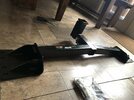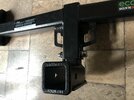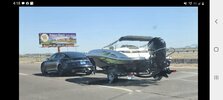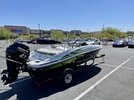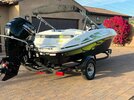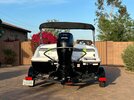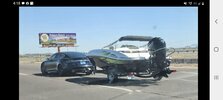I think the paid one allows more customization and things like realtime weather. While I don't use the app all the time, I figure a few bucks a month to help the developer is worth it.
I would encourage putting the weight you can more in the car than the boat. I've found it to be less of an effect on the efficiency. Also spend time to optimize the boat on the trailer. You can adjust the rollers and bunks and maybe improve the efficiency a bit more if you have room to lower. See if you can drop the Bimini top a boat when driving. That is at least a few % there.
Also a boat cover (for towing) can help out as well. Of course trailer tire pressure is something to check. Don't fuel the boat up until close to your destination as well if you can.
Thank you, another thing I don’t think ABRP isn’t calculating is the time to charge. Since my old S charges much slower as it fills than newer cars, it seems to be off by about 10-15 minutes charging each time I’ve driven to California l. So I have to add time accordingly to get a more realistic overall time increase over a gas truck.
And this trip I had nothing, I picked up the boat by myself. But I added extra weight for ABRP for passengers and stuff on future trips.
And nothing in the boat can be adjusted as far as I know like lowering the bunks or anything
The Bimini has 3 settings, fully open, a higher storage position then one than I had, and the one I had. What I should have done is pulled the pins and had the top just lying on the seats. I’m sure that would’ve saved a little drag.
It did come with a custom made trailering cover made for that specific boat. I was in hurry and didn’t put it on. The owner said it’s pretty form fitting and it fits with the Bimini in the position I had it in. I still think that would have been less drag.
I’ll use it next time and see the avg watts.
The fuel tank is small (13gal) and it was 1/2 full, so it was only about 40lbs.
And I never checked the tire pressure on the trailer, I even forgot the spare tire in his garage. He lives by the lake I’d be going to, so he’s going to meet me at the supercharger when I go.
I usually have my 21” tires at about 42F/44R cold. They were running about 46/47 on the freeway, I don’t know if that’s most efficient or not.
Thank you for the advice, I think I’ll try to get there this weekend and stay the night so I can have two lake days to make it worth the 4.5hrs extra from charging and driving 65mph.



